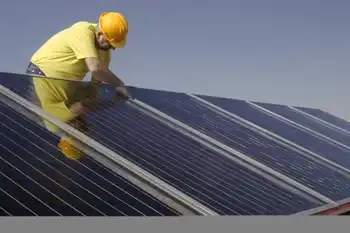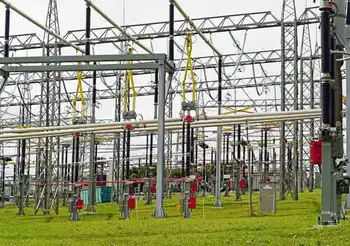eSolar strikes deal to build power plants in China
CHINA - A U.S. solar power company said it will help build a series of solar thermal power plants in China, as the world's biggest emitter of greenhouse gases tries to decrease its heavy reliance on coal, imported gas and oil.
California-based eSolar Inc. will provide Shandong Penglai Electric Power Equipment Manufacturing Co. with the technology and information to build the concentrated solar thermal power farms with a capacity totaling 2,000 megawatts.
The $5 billion investment would be the largest such project in China, though the companies didn't say who would be investing how much.
"This is a huge jump for China," said Deborah Seligsohn, director of the China climate program for the U.S-based World Resources Institute. "That amount suggests a number of commercial plants."
Interest in China as a solar energy market is growing quickly as the government looks for alternatives to coal. The deal comes four months after the largest solar panel maker in the U.S., First Solar, struck a tentative deal to build a massive solar field in China.
The eSolar deal is for concentrated solar thermal power — not the traditional image of vast farms of solar panels, but a system of taking what essentially are mirrors and focusing them to heat water to create steam to power a generator.
"There's room in the world for both systems, and we need both," Seligsohn said.
China is moving much faster than the U.S. in solar power development, eSolar officials said.
"This is an excellent example of what we all must do to fight climate change," Merrick Kerr, eSolar's chief financial officer, told a news conference in Beijing.
The first solar plant under the deal will be in Yulin city in the central province of Shaanxi.
China has set ambitious goals for solar and other renewable energy in an effort to clean up its environment and curb surging demand for imported oil and gas, which communist leaders see as a strategic weakness.
Late last year, legislators approved changes to China's 2006 renewable energy law saying utilities will be required to buy all the power produced by wind farms and other renewable sources in an effort to reduce heavy reliance on coal.
Government goals issued in 2005 call for at least 15 percent of China's power to come from wind, solar and hydropower by 2020, up from 9 percent now. Officials say that target may be raised to 20 percent because the industry is developing so quickly.
Coal, however, provides two-thirds of China's power and is expected to remain the dominant energy source in coming years.
China is the world's biggest emitter of greenhouse gases and is not bound by global agreements on curbing emissions because it is a developing economy. But the State Council, or China's Cabinet, has promised to reduce emissions of carbon dioxide for each unit of economic output by 40 percent to 45 percent from 2005 levels by 2020.
Related News

Avista Commissions Largest Solar Array in Washington
SPOKANE - Official commissioning of the Adams Nielson solar array located in Lind, WA occurred today. The 28 Megawatt DC array is comprised of 81,700 panels that span 200 acres and generates enough electricity to supply the equivalent of approximately 4,000 homes annually.
“Avista’s interest in the development of Solar Select, a voluntary commercial solar program, is consistent with the Company’s ongoing commitment to provide customers with renewable energy choices at reasonable cost,” said Dennis Vermillion, president, Avista Corporation. “In recent years, an increasing number of Avista customers have expressed their expectations and challenges in acquiring renewable energy. Avista is pleased…




